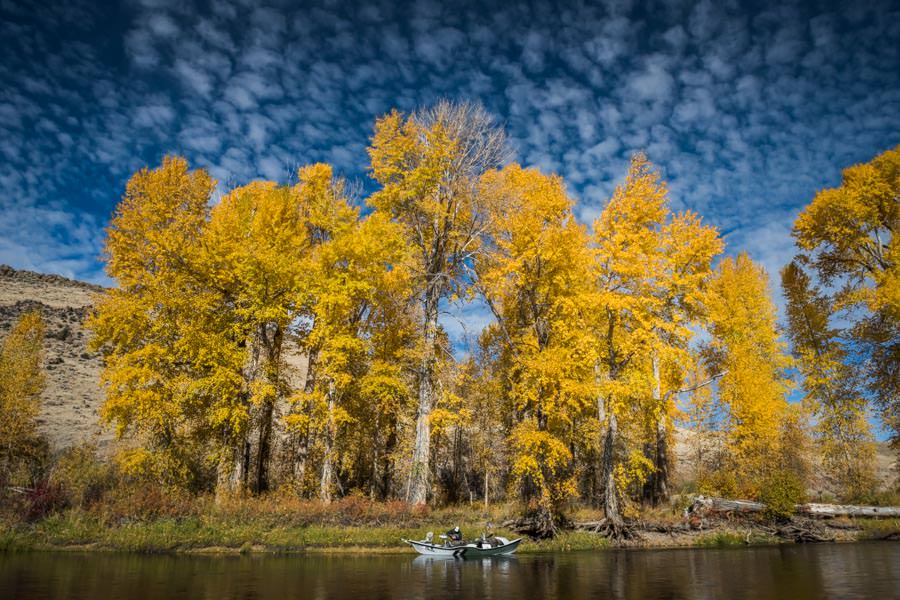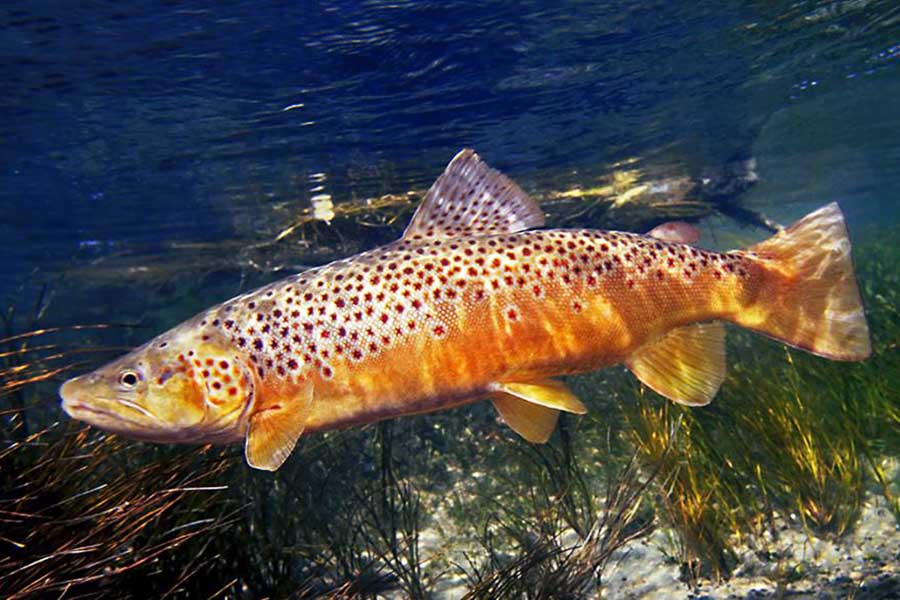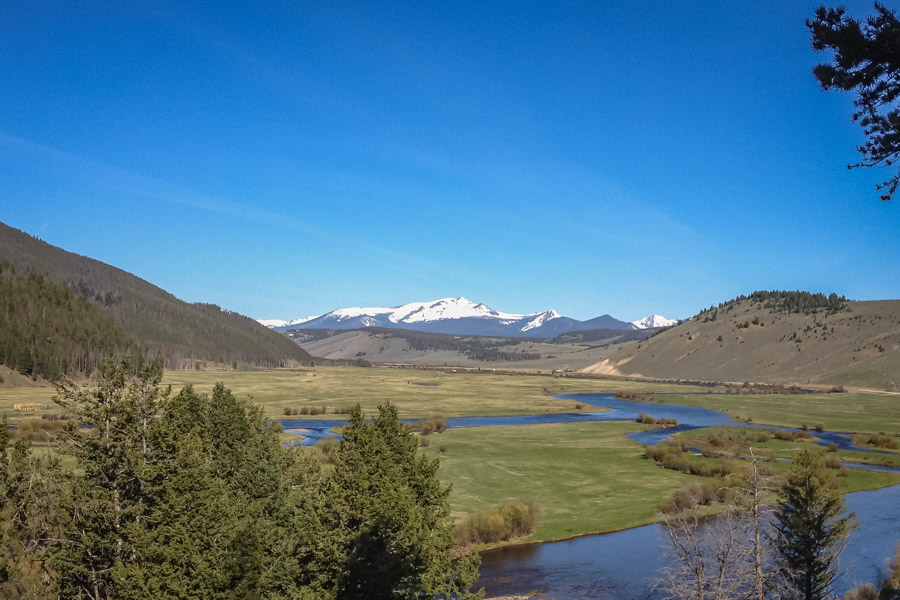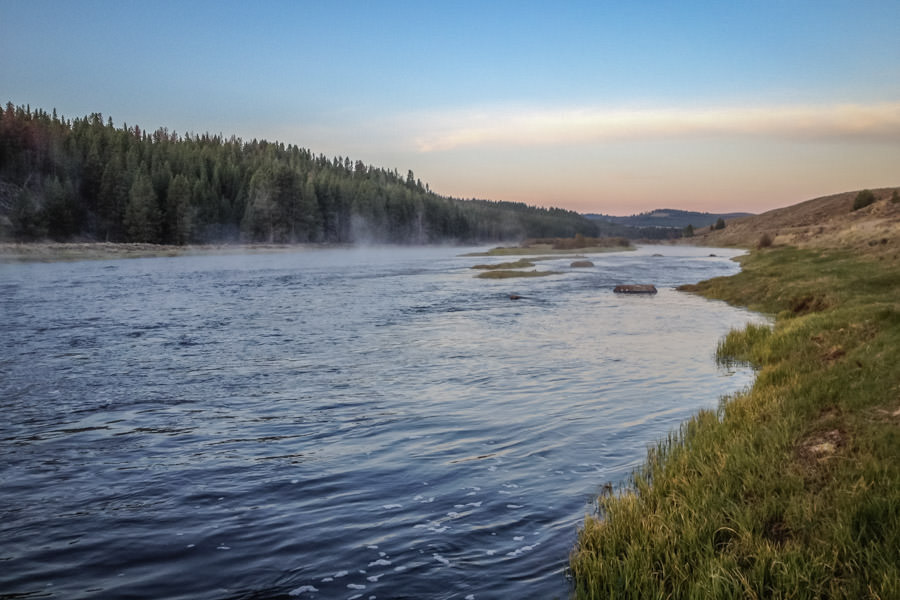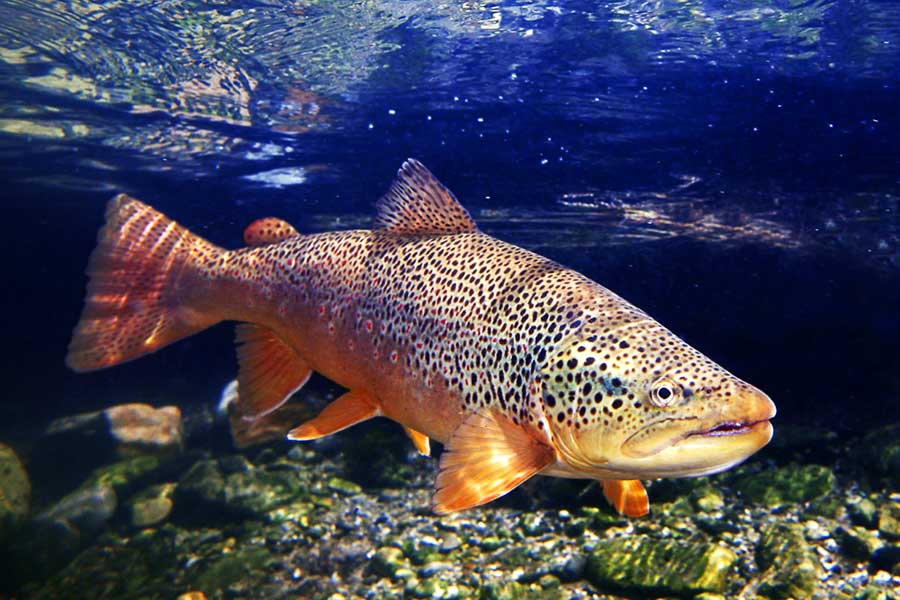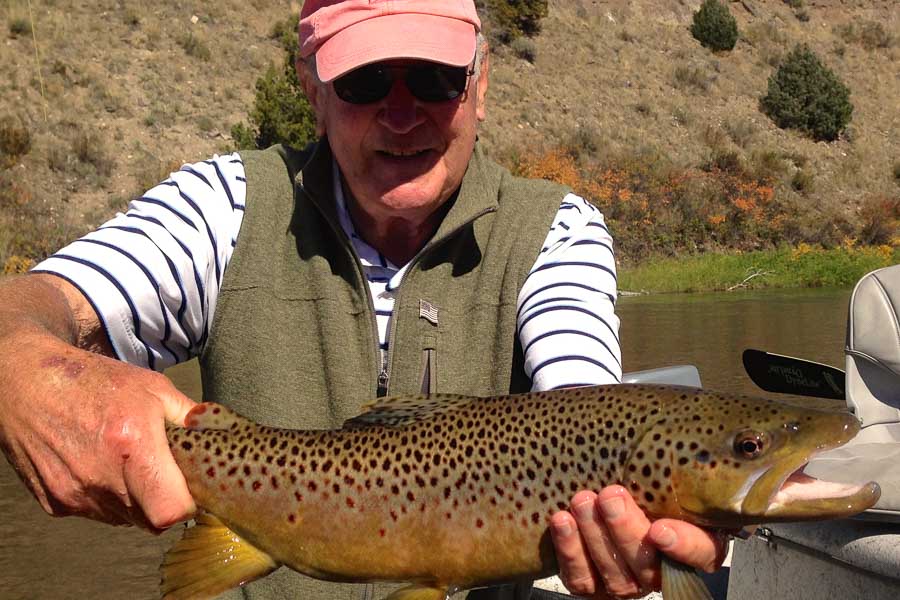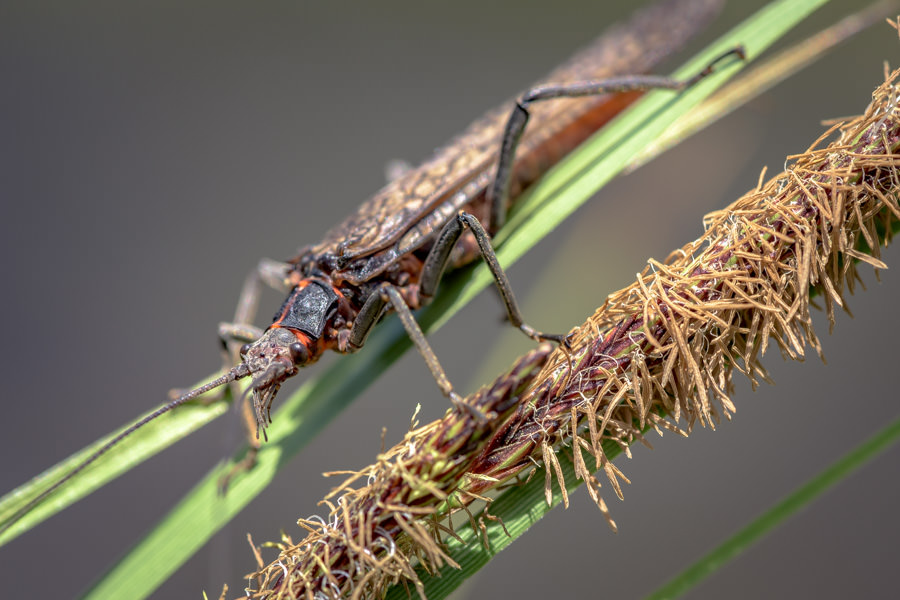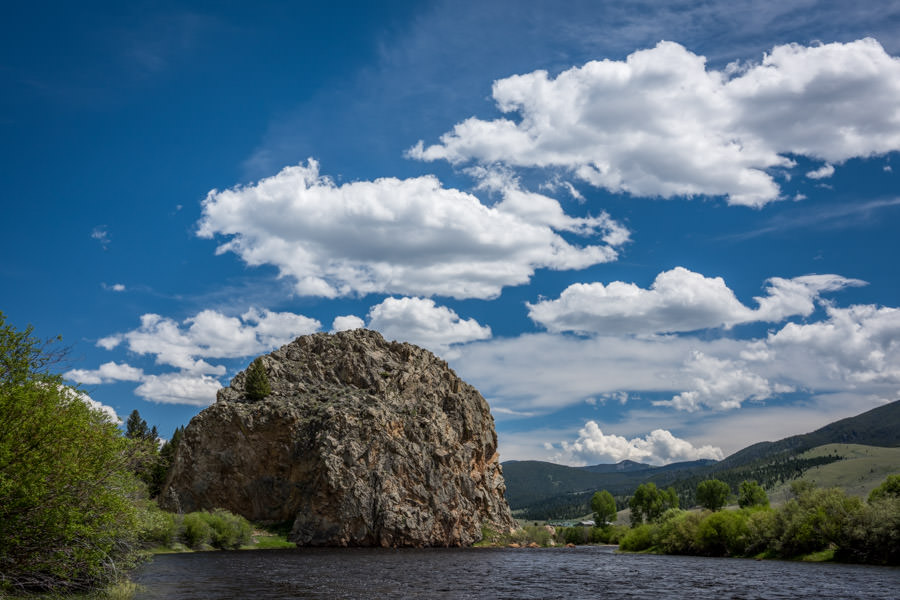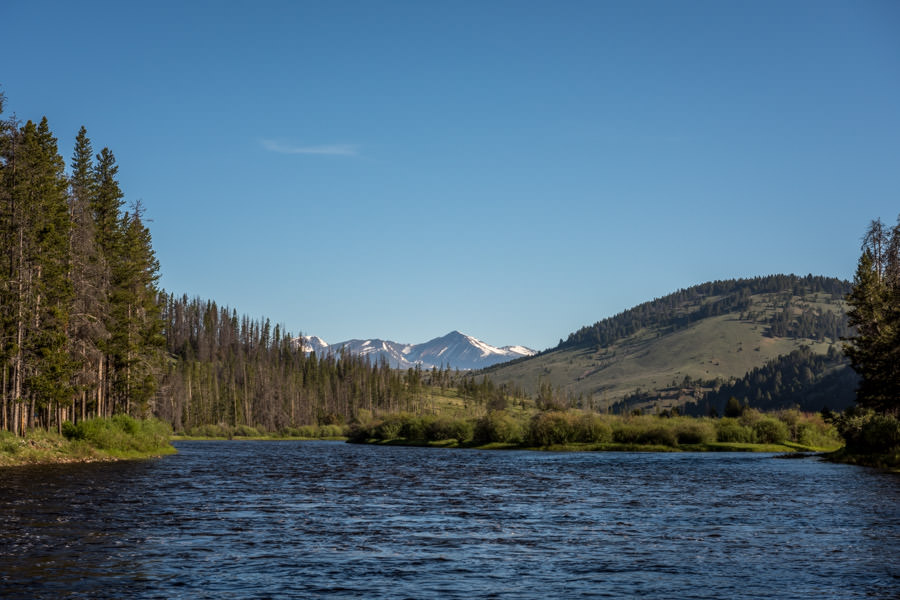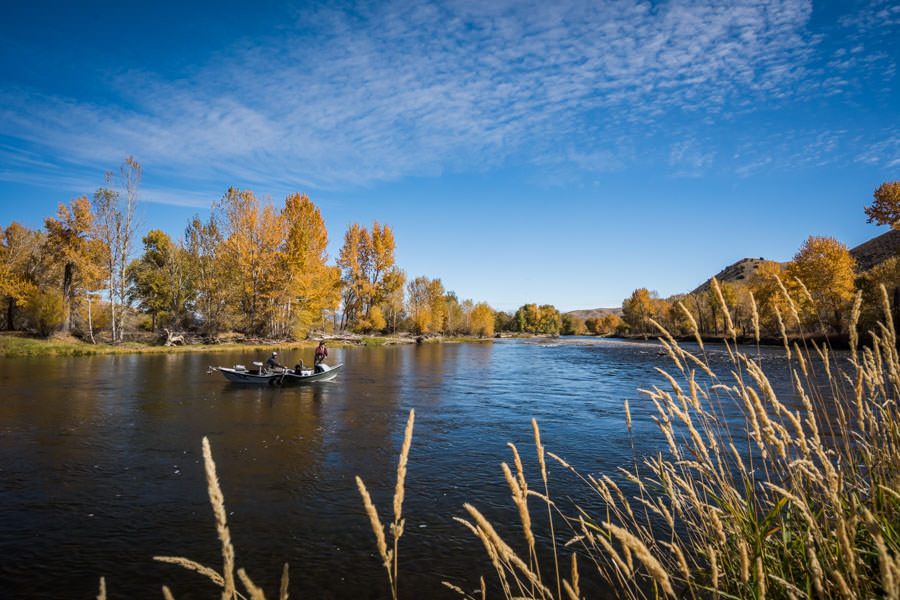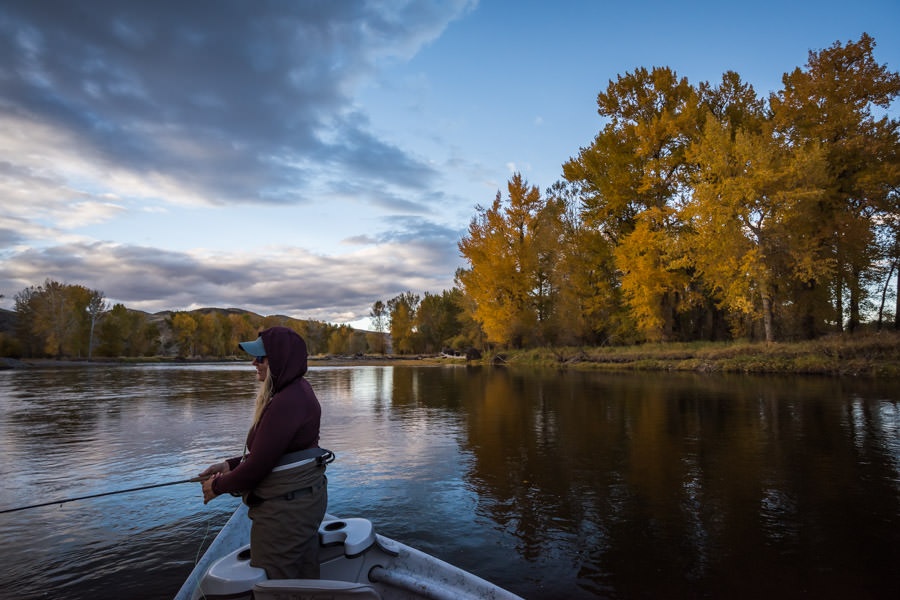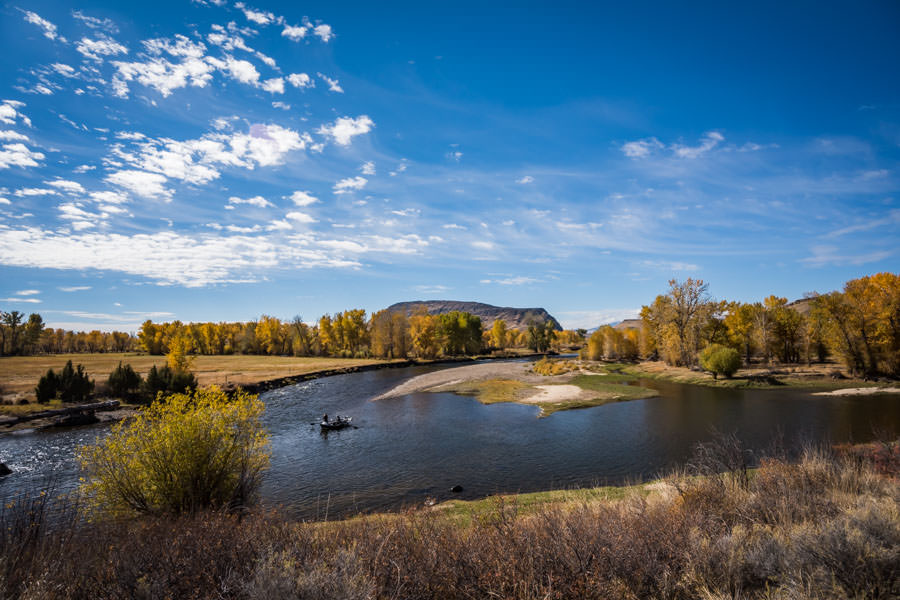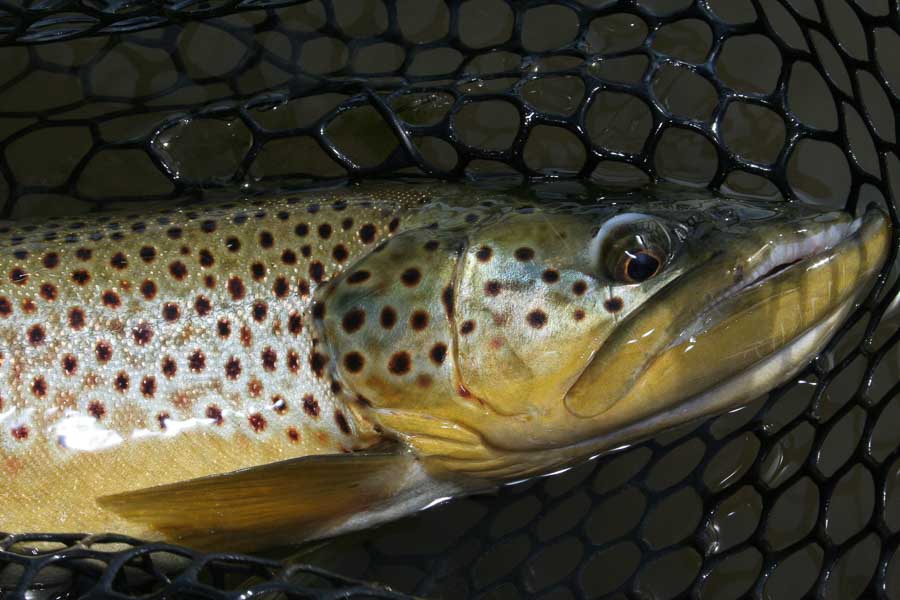The Big Hole River is as diverse as it is divine. Home to 5 species of game fish, brown trout, rainbow trout, cutthroat trout, brook trout, and the Lower 48's last remaining strong hold of native fluvial arctic grayling. This pristine fishery has 4 distinct sections over its 150 mile course encompassing high country meadows, tight canyons, and wide open cottonwood river bottoms. With pocket water, riffles, pools, shallow edges, deep runs, undercut banks, and long tail outs it has every type of water to hide your next wild trophy trout in. The river is also home to wide spectrum of aquatic insect species; some pf the most prolific hatches including salmon fly, Mother's Day caddis, pale morning duns, and tricos to name a few! Whatever your game is, from match the hatch dry fly fishing to chuck and duck streamer fishing, there is a type of water and time of year that will suit your fancy. It's no surprise that the Big Hole has been affectionately nicknamed Montana's Last Best River.
Headwaters - Headwaters to the North Fork
The upper Big Hole valley is characterized by expansive higher elevation meadows dominated by agricultural land. The river lazily winds through hay meadows, pastures and willow lined, marsh-laden bottom land. Along the way it gathers feeder streams and springs until it grows into more sizable river better suited for floating near the town Wisdom where the North Fork joins the main river. This upper river is arguably the most scenic with towering mountain ranges on all sides and large conifer forests dropping down to the edges of the meadows and river side. From the headwaters to the North Fork the Big Hole offers small stream fishing for rainbows, brook trout, and the native grayling and cutthroat. Dry fly fishing for smaller fish in the 10”-14” range can be exceptional in the upper reaches.
Upper Big Hole - North Fork to Dewey
Once the North Fork joins just outside Wisdom it gives the Big Hole the true river status. From the North Fork to Dewey the river becomes floatable with the chance at larger fish as well as the addition of brown trout. The river maintains it’s slow gradient through the wide open valley as it meanders from a northern flow to an easterly flow. Roughly two thirds of the way through this section the Wise River joins the Big Hole giving it a breath of cold clear water from the south. During summer months this can rejuvenate this section of river because of the addition of the colder mountain stream flows. This section offers all aspects of water type and technique. Hatches can be prolific and trout numbers and size are as healthy as anywhere in Southwest Montana.
Middle Canyon Section - Dewey to Salmon Fly (Melrose)
The river drops into the first of two canyon sections near Dewey. The first shorter canyon boasts cliff walls lining a steeper gradient creating some small rapids and large deep pools before tumbling into the next set of small rapids and pools. Near the town of Divide it opens broadens again for a short stint before dropping back into the mountains and the second “canyon” section. The section can section ends just above Melrose. These "canyon" section are more accurately a blend of several small canyons and valleys as the river skirts the eastern edge of the mountains. In this reach of the river anglers can expect frequently changing water types with each bend of the river. The river course also changes again from it’s easterly flow to a southerly flow. This section provides great pocket water as well as long classic runs. It maintains the most suitable habitat for both trout and aquatic insects. Some of the heaviest hatches are found in this reach of the Big Hole as well as the highest concentration of trout which is upwards of 3000 fish per mile. Not surprisingly this can also be a busy section of water during famous hatches like the salmon fly.
Lower Big Hole - Melrose to confluence with Beaverhead forming the Jefferson River
From Melrose down to its confluence with the Beaverhead the Big Hole once again changes in its characteristics. Here it moves from a mountain valley river towards the arid plains and broad cottonwood lined river bottom. The pace of the river slows again creating classic freestone riffles and runs as it meanders is way south and then eventually east before heading back to the north in its final reaches to join the Beaverhead in Twin Bridges to form the Jefferson River. As the river expands it’s distance from it’s cold clear sources upstream the insect life and trout numbers begin to decline slightly. Although trout numbers drop it is not enough to dissuade anglers looking for solitude in this less frequented section of river. During the heat of summer it is best to target the early mornings when water temperatures are cooler. This section of river can experience warmer afternoon water temperatures. The Big Hole river in general can experience warmer water temperatures in the summer and in lower water years or during heat waves "hoot owl" restrictions may be placed on some sections of the river which requires that all fishing be done before 2pm.
Pre-runoff (April - May)
Pre-runoff excites two major genres of anglers: those looking to chase hatches and those hunting big fish with streamers. Spring hatches are some of the heaviest of the yearw with the emergences of skwala stoneflies, baetis mayflies, and the Mother’s Day caddis. From ice-off in late March or early April until runoff gets rolling in May, many local anglers swear that this is the time and place to have a shot at some of the largest fish in the river. Big streamers are the ticket when searching for these behemoths. If anglers want to hunt for big fish with streamers they need to be prepared to swing for the fences with over-sized flies and also recognize that striking out is a real possibility. For the dry fly angler the emergence of skwala stoneflies and baetis mayflies kick off the season with a bang, followed by the emergence of the sometimes blanket thick Mother’s Day caddis hatch. Weather can be inclement but the payoffs are more than worth it as the fish are hungry and ready to devour a meal after a long winter's nap under the ice. This time of year in southwest Montana is still under the radar for the majority of the angling public so solitude can be found alongside some great fishing.
Runoff (Late May-June)
Runoff begins in May, peaking around the first week of June before tapering off towards summer flows. Higher flows coupled with the near of perfect water temps, the bugs and fish hit their stride for the season. The biggest draw during this time of year is the famed Salmon fly hatch which generally runs for a three week stint in June. With bugs as large as your finger clumsily fluttering around on the surface of the water, it is no wonder that the the trout get fired up. With the waters of the lower stretches of the river warming first the, hatch starts in the lower stretches and works its way upstream. Each day salmon flies make their appearance a little further up the river. The location of the emergence is not an exact science and sometimes it moves only a fraction of a mile in a day, while at other times it can move quickly covering multiple miles a day. Salmon flies can make anglers go as batty as the trout but it’s a spectacle to witness! As the Salmon flies taper off the slightly smaller golden stoneflies enter the mix keeping the action alive at a sometimes feverish pace.
Summer (July-Sept)
As the Big Hole gracefully slides into summer the fishing continues with a smorgasbord of hatches. The golden stones continue popping as the pale morning dun mayflies start in earnest. The smaller Yellow Sally stoneflies also join the PMD’s creating some create variety and combos. Caddis are always part of the mix throughout the summer as well. Nocturnal stones which are often overlooked should not be forgotten. These stoneflies are about a size six and tend to hatch at night, they can be seen skating on the waters surface early in the mornings (their stubby wings prevent flight). The nocturnal stones are best fished in the low light and cool temps of the morning and seem to always be thickest around the full moons. The last remaining aquatic bug of the summer is the small yet mighty trico mayfly that emerges in mind boggling numbers, creating clouds of dancing insects before falling to blankets of spinners. The dog days of summer are not without excitement with the opportunity to throw the now prevalent terrestrials. Hoppers, ants, and spruce moths can at times offer some great surface action. Hoppers can vary year to year but are found throughout the river system, while spruce moths are generally found only along the sections of river where conifer trees are concentrated. It seems in the trouts mind spruce moths are the tastiest of candies because there is no hesitation in their mind when eating a well presented spruce moth. A word to the wise in the summer months, always keep an eye on the water temps and flows and plan your day accordingly.
Fall (Sept-Nov)
As days shorten and temperatures begin to cool on the Big Hole the river begins to get a resurgence of life in both flows and more favorable water temps. It is easy to see why some anglers target fall as their preferred window on the river. Traveling anglers have headed home and many local angler’s minds begin to turn to hunting. The terrestrial fishing continues but will give way to the baetis mayfly on overcast days. This is also a time of year that anglers will again stack their streamer box above the rest in search of the increasingly aggressive brown trout.
Winter
The Big Hole is not a winter fishery with much of the river freezing completely over leaving no open water to fish.



